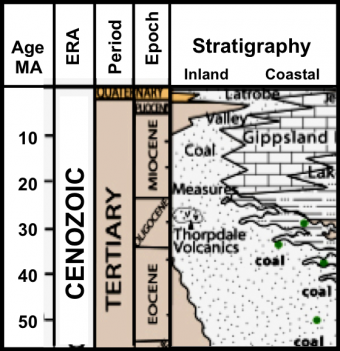Here, we begin to explore the Barracouta Field of the Gippsland Basin. The early explorationists did not know this or other fields existed during the time period of our simimulation, so keep this in mind throughout the lecture and the exercises - you are discovering the field in the same manner at the early explorationists! Exploration throughout the Gippsland Basin began in the mid-1970s. Barracouta was discovered in 1965, and was the first offshore well and the first offshore discovery. The Barracouta began producing in 1969, and other fields were discovered in the 1970s.
In the lecture, we will cover the plate tectonic setting, basin evolution, and stratigraphy. We will also cover the components of the hydrocarbon generation system, including all five (5) play elements.
At the end of this lesson, students should be able to:

This short course takes a brief look at what happens in the early stages of field exploration in the petroleum industry. The Gippsland Basin, offshore Australia, is the field example, and we start with a look prior to the first offshore licensing round of the field. Throughout the course, we will progress to the stage of management review of a wildcat well.
We encourage the reuse and dissemination of the material on this site as long as attribution is retained. To this end the material on this site, unless otherwise noted, is offered under Creative Commons Attribution (CC BY 4.0) license